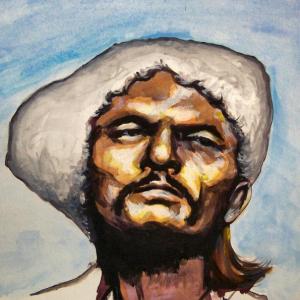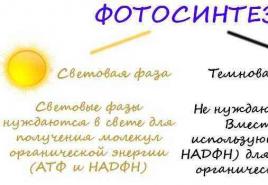How to draw the emotion of joy. Drawing Joy
What is joy for a child? This is your own worldview of positive emotions. When a child is happy, a flow of sincerity comes from him, he is cheerful, open, smiling, sociable and happy. It is at this moment of joy that his inner state allows him to show all the best qualities of his character. For the harmonious development of personality, it is important for the child to experience this state as often as possible. This is precisely the reason that I want to conduct the lesson “Drawing Joy” - drawing on asphalt.
Download:
Preview:
Preliminary work
- We recruit 4 teams of children of 4 people each.
- We determine a place on the asphalt for 4 teams of 4 people.
- We prepare sets of multi-colored crayons
- Selecting a poem about “Joy”
- Finding a character
- Preparing a magic chest with a surprise (candies)
- We select musical works
- We bring a music center to the “Joy” painting area
- A survey of children is being conducted “What is joy?”
Conducting direct educational activities on the kindergarten playground.
Educator:
Hello guys. Today we will talk about joy. Let's discuss what or who is Joy for each of you. Where did she hide? Can I taste it? Then we will depict Joy on the asphalt using magic crayons.
Listen to how I imagine Joy.
When dreams come true
Then we're good
When it's warm and summer
When it's light around
When children are having fun and joyfully playing
And sunbathe with mom and dad together under the sun
When we play and eat in the fresh air
We live very, very happily and together.
Guys, what do you think is Joy for each of you?
- Everyone's having fun
- You can play and walk
- When something good is done
- Mom allows me to eat a lot of sweets
- I have a lot of cars
- They gave me a stroller and a doll
- Chat with friends
- When you're friends with someone
- They're playing with you
- When I'm not bored
- A trip to the sea
- Swimming in the sea
- Walking with the dog
- When everything is allowed to you
- Buying clothes
- We go to the theater
- I went to the zoo
- My mother reads my favorite fairy tale to me
- A friend is coming for her birthday
- Relaxing at the dacha
- New Year
- When Santa Claus comes wearing daddy's slippers
- Meeting mom and dad
- Are you going to visit your grandmother?
- My grandmother bakes me delicious pancakes
- Hugs and kisses with mom and dad
- Walking hand in hand with mom
- Mom and dad gave me a hamster
- They bought me a dog
- You build a sand castle at sea with your dad
- Swimming in the sea with dad
- When is my birthday
- When there are a lot of balls and you can play with them
- Spiderman came to my birthday
- When many gifts are given
- I have all the princesses
- The birds are singing
- A rainbow appears
- The sun is shining
- Flowers smell delicious
- They give me flowers
- Delicious strawberry
- Mushroom picking in the forest
- In winter we make a snowman
- Let's play snowballs
- Building castles out of snow
- Let's go sledding
- We are skating
Educator:
Guys, how many joys you have in your life. This is wonderful. What do you think, is it possible to eat joy?
Children (children’s responses based on a survey)
Of course you can;
- for me joy is a lot of delicious sweets, chocolates, cakes, pastries, ice cream
- I love vegetables carrots, cabbage, tomatoes, cucumbers
- for me joy is strawberries, blueberries, wild strawberries, watermelon, cherries
- for me it's bananas, apples, pears
- for me it's semolina porridge
- I like chips
Educator:
Guys, where do you think the joy is hidden?
Children (children’s responses based on a survey)
- Joy was hidden in gifts.
- At the birthday party
- On the holiday
- For the New Year.
- In the forest under a tree because mushrooms grow there
- In the garden, because there are a lot of delicious currants there
- On a tree because apples grow there
- In the refrigerator because there's ice cream in there
- Under the chair in the kitchen because my cat Marquis is sitting there
- In the store because they sell delicious cakes
- At the circus because there are a lot of animals
- In balloons because they are colorful
- In my toys, because my favorite Winx doll lives there
- At the sea, because it’s warm there and you can swim
- On a visit, because there I can do everything
- In grandma's kitchen, because it's delicious there
- In mom's arms because it's warm there
Educator:
Here it is, what a different kind of Joy. Interesting, unexpected, tasty and mysterious.
Oh, guys, do you hear someone laughing? Who is this guys?
Children:
This is Sunny.
Sun:
Hello my dear children. I am glad to be your guest.
Are you happy to see me?
Children:
Hello Sunshine. We are very glad to see you as our guest.
Sun:
Guys, I know that you are joyful and happy children. I came down from the sky to warm you with warm rays and to make you feel even happier and brighter.
Let's smile at each other because this is also joy (children smile at each other)
Let's hug it nice and joyfully. When people haven't seen each other for a certain time, they always hug because they are happy with each other. (children hug)
Let's say polite words to each other. Because saying them and hearing them addressed to you is respectful, pleasant and joyful. (children say polite and pleasant words to each other)
Guys, look, there are many beautiful flowers growing around us. Seeing them and enjoying them is aesthetically pleasing and joyful. Look at them and feel their aroma. (children enjoy the flowers and smell them).
Now let's divide into 4 teams of 4 people. I will now share with you my magic crayons, and with the help of them you will depict Joy as you imagine it on the asphalt. (Children take crayons, and each team draws Joy on the asphalt. While the children are drawing, music about Joy plays)
Well done boys. You have interesting, beautiful, unusual and colorful drawings. You depict: mom, dad, sun, sky, flowers, dog, cake, candy, sledding, skating and much, much more. The main thing is that you know how to rejoice.
Guys, it's time for me to go home to heaven. I felt joyful and pleasant with you. See you soon. (The sun goes away)
Educator:
I am glad that so many different events and phenomena bring you joy. That communication with mom and dad, grandparents is a joy for you. That love, care, warmth are joy. Playing sports, playing with friends, eating tasty and healthy food, communicating with nature, with animals - all this brings you great joy.
People with an analytical mindset do not really like to express their feelings openly, although for successful communication it is important for them to know how to portray the right emotions in the right situations. The emotional background is an assistant in establishing contacts between people. When you see the reaction of your interlocutor, it is easier to have a conversation and understand each other. The ability to control your emotions is a gift that is given by nature, but which can be developed with certain exercises.
Warm up for the face
Many actors begin their rehearsals by warming up their facial muscles to make it easier to “sculpt” the desired emotions from them. You can do this on your own in front of a mirror or as part of a theater group. Looking carefully in the mirror, you need to find moving areas: eyebrows, forehead, eyes, lips, cheeks, tongue, nose. One should take turns performing gymnastics, that is, moving them. For example, raise your left eyebrow and then your right, or perform several movements with your eyes and lips. A five-minute warm-up is enough to feel the mobility of your face. Those who have stretched their lips and tongue well note that it has become easier for them to speak.
Study your face
It is very important for an actor that his face is expressive, and the audience can understand from the first time what it expresses. For ordinary people, the success of communication depends on such expressiveness. However, we don't always know what our face looks like when we experience a particular emotion. By studying your facial expressions and remembering the position of your muscles during certain feelings, you can be sure that the desired emotion will be expressed correctly. For example, surprise is characterized by an open mouth, wide open eyes, and raised eyebrows. This is a standard manifestation of emotion. But in life a person may express it in a completely different way, and therefore runs the risk of being misunderstood.
Ten masks
Most often you have to express a standard set of emotions, which can be called ten masks:
- fear;
- anger;
- love (falling in love);
- joy;
- cry;
- embarrassment, embarrassment;
- contempt;
- indifference;
- pain;
- petition (you ask someone for something).
When trying to portray them, remember your expression in the mirror so that at the right moment you can reproduce them in your memory and show them on your face. It is important to remember the movement of each muscle when creating an image and when flowing from one emotion to another. The more you practice, the easier it will be to “put on the mask.”

The secret: how to better portray emotions
Sometimes it is very difficult to obtain a reliable “mask”. You need to not only depict something similar on your face, but also succumb to the corresponding feelings. It’s difficult to do this when you need to look angry, but at heart you are a kind person. To make the facial expression as realistic as possible, it is suggested that you say the appropriate words to yourself. For example, when you need to portray contempt, you need to repeat to yourself words like “Who do you look like? How could you fall so low? It’s disgusting to be around you!” Such pronunciation speeds up the process of commanding certain emotions on the face.
Tasks:
Diagnostic:
- Study of the level of development of emotions
- Diagnostics of the level of formation of correct speech inhalation and exhalation
Educational:
- Develop the ability to subordinate your actions to instructions.
- Foster mutual understanding and friendliness
- Cultivate respect for each other
LESSON 9. |
||
| Introduction. Getting ready to work. | ||
| Breathing exercise | ||
| Game Exercise "Joy" | ||
| Exercise "Feign joy" | ||
| Game "Sunny Bunny" | ||
| Physical education minute | ||
| Pictogram | ||
| Exercise “I feel sad when...” | ||
| Game "Wolf and Hares" | ||
| Fine art activity "Depict emotions" | ||
| Oculomotor exercise | ||
| Exercise "Guess the emotions" | ||
| Exercise "Friendship begins with a smile" | ||
| End of the lesson. | ||
40 min. |
PROGRESS OF THE CLASS
WARM-UP:
1) Creating a positive, working atmosphere in the group.
2) Preparing the child for the upcoming activity.
Greetings. Getting ready to work.
BREATHING EXERCISE
I.P.- sitting. Children sit with their eyes closed. Exhale - open your eyes. Inhale - close your eyes. Continue, exhaling in the light, inhaling in the dark. Let your eyes relax completely when they are closed. Open your eyes and blink.
MAIN PART:
Diagnosis of the level of formation of emotions. Work on the topic
(Thematic games and exercises).
Psychologist: Today we will talk about emotions. Look at this man's face (The “Joy” icon is shown). What kind of face do you think this person has? (Children's answers). Yes, joyful. How did you guess? (Children's answers). Yes, correct. Well done. When we have a joyful face, we smile widely, our eyes become narrow, they squint. Let's try to portray joy on our face.
(During this lesson, you can use the presentation "Emotions" from the "Presentations" section)
Exercise "PICTURE JOY".
All participants sit in a circle. One player depicts “joy” and passes this expression on to the neighbor on the right, who must repeat what he saw on the neighbor’s face as accurately as possible.
Psychologist: Let's play the game "SUNNY BUNNY" to put you in a good mood.
Exercise "SUN BUNNY".
o The sunbeam looked into your eyes. Close them.
o He ran further over his face, gently stroke him with your palms on the forehead, on the nose, on the mouth, on the cheeks, on the chin
o Gently stroke your head, neck, arms, legs.
o He climbed onto his stomach - stroke his belly.
o The sunny bunny is not a mischief maker. He loves and caresses you, make friends with him.
Great! We made friends with the sunbeam, take a deep breath and smile at each other.
Psychologist: How did you feel after doing this exercise? (Children's answers)
Physical education minute.
Exercise "PICTOGRAM"
Psychologist:(Shows the “Anger” pictogram) Look at the face on the card. How does the person in the picture feel? (Children's answers). Look at the expression on his face...What happened to his mouth? Eyebrows? What is the expression of the eyes? Now let's listen to the story about the boy Petya, which is called "Angry Grandfather."

Petya came to his grandfather’s village and immediately went for a walk. Grandfather was very angry because Petya left the gate without warning. Where did he go? What if something happens to him? Let's act out this story.
Exercise “I AM SAD WHEN...”
Each child tries to finish the sentence started by the leader... I feel sad when...
FOR EXAMPLE:
the child describes sadness as the feeling when "... there are tears in your heart."
o "I sometimes cry when I'm sad."
o “When you get really angry, it’s better not to hit anyone, because they might hit you back,” etc.
The psychologist demonstrates the "Fear" pictogram. Look at the picture. Who is depicted on it? What's his mood? (Discussion taking place).

Psychologist: Let's play the game "Wolf and the Hares".
Game "WOLF AND HARES"
A leader is chosen from among the players - a wolf, the rest are hares. When the wolf falls asleep, the hares slowly go out for a walk, but when they hear footsteps, the wolf pounces on the hares and catches them.
After the end of the game, a discussion takes place: what emotions do the players experience when they have played the role of hares. Were they scared?
Work in notebooks, fine art activities.
o Students should take turns choosing 3 colors of paint that they like best and draw 3 circles.
Oculomotor exercise
TARGET:
Relieve fatigue and eye strain, prevent eye diseases.
I.P.- sitting. The head is fixed. The eyes look straight ahead. Begins practicing eye movements in 4 auxiliary directions (diagonally), bringing the eyes to the center. Movements are performed at a slow pace (from 3 to 7 seconds). Eye movements must be combined with breathing.
o Students are given sheets of paper. There are outlines of masks on them; you need to depict a happy, sad, scary mask.

Exercise "GUESS THE EMOTIONS".
Students are offered pictograms depicting emotions. They must guess what emotion is depicted in a particular picture.



Exercise "FRIENDSHIP STARTS WITH A SMILE."
Those standing in a circle join hands, look into the neighbor’s eyes and silently give him the kindest smile. (One at a time).
CONCLUSION:
- Checking completed tasks.
- Strengthening positive emotions from work.
- Summing up the lesson.
Klavdiya Pershikova
"Anger". Lesson on the development of the emotional sphere of children of senior preschool age
Goals: expand view children about emotions« anger» ; promote open expression emotions in socially acceptable ways, removing negative moods, weakening aggressiveness; learn children analyze your aggressiveness and eliminate it through play and positive behavior.
Equipment: pictogram "anger"; single-color paper napkins.
Progress of the lesson
Psychologist. Hello children! How else do we know how to say hello? (Answers children)
Let each of you be the one who receives "smile" will call himself by name and at the same time perform some action (movement, but in such a way that all the children can repeat your action. I will say my name and clap my hands. The children continue.
Today we will continue our acquaintance with the basic human emotions. Try to guess which one emotions will be our topic. To do this, listen to an excerpt from a poem by K. Chukovsky "Stolen Sun".
And the Bear stood up
The Bear growled
And to the Big River
The Bear ran.
And in the Big River
The crocodile lies
And in his teeth
It's not the fire that burns...
The sun is red
The sun is stolen.
The Bear approached quietly,
Pushed him lightly:
"I'm telling you, villain,
Spit out the sun quickly!
Otherwise, look, I’ll catch you,
I'll break it in half,
You, ignoramus, will know
Steal our sun!
Answers children
Psychologist. That's right, today we'll talk about anger, or about anger. Look at the pictogram « Anger» . What facial expression should a person have when he is in an angry mood? (the eyebrows are furrowed, the mouth is slightly open, stretched to the sides, two rows of clenched teeth are visible). Show this mood to each other in a circle.
Close your eyes ( "Palming"). Mentally continue offer: « Anger is...» . Now continue this sentence out loud.
A game "Break the circle".
Psychologist. Now let's talk about this. How many of you have ever been in a situation where other children did not accept you in the game? What did you do in these situations? Answers children.
Psychologist. Perhaps it also happened that you still forcibly wanted to join in game: pushed children, they took away the toys.
So now we'll play out this situation.
Have everyone stand in a circle and clasp their hands tightly. One child will have to stay behind the circle and try to break into the circle. (If the child is unable to do this, the psychologist ensures that he is outside the circle for no more than one minute. The children must let him in.)
Psychologist. Tell me how you felt when you were outside the circle. Answers children.
A game "Masks".
Psychologist. We will now make a mask of anger. Take some napkins. Using pinching movements, make holes in them so that you get a mask with an angry expression on your face. Try this mask on. Children complete the task.
Exercise "Ways to get rid of anger» .
Psychologist. I offer you several ways to get rid of anger:
Tear the newspaper;
Stomp your feet;
- "collect" my anger in the bag;
Crumple the newspaper;
Smile while looking in the mirror.
Exercise "Quiet Lake" (children lie on the carpet, audio recording plays)
Psychologist. Is our class is coming to an end. Remember what we did today, what new things we learned, and what you liked most. Answers children.
Psychologist. In parting I want to give you a warm touch (I stroke you with love, I even feel very happy)
Literature:
1. Pazukhina I. A. Let's get acquainted! Training development and correction of the emotional world of preschoolers 4-6 years old. St. Petersburg:Childhood press, 2004
2. Kryazheva N. L. Children's world emotions. Children 5-7 years old. Yaroslavl, 1997







